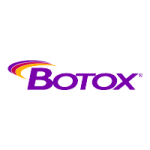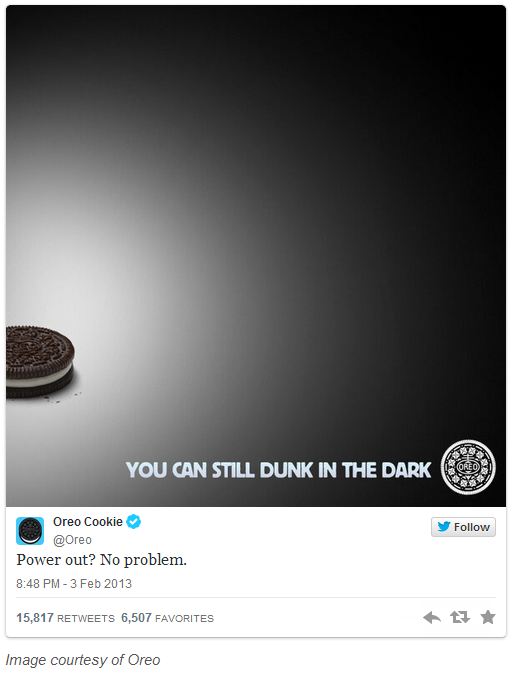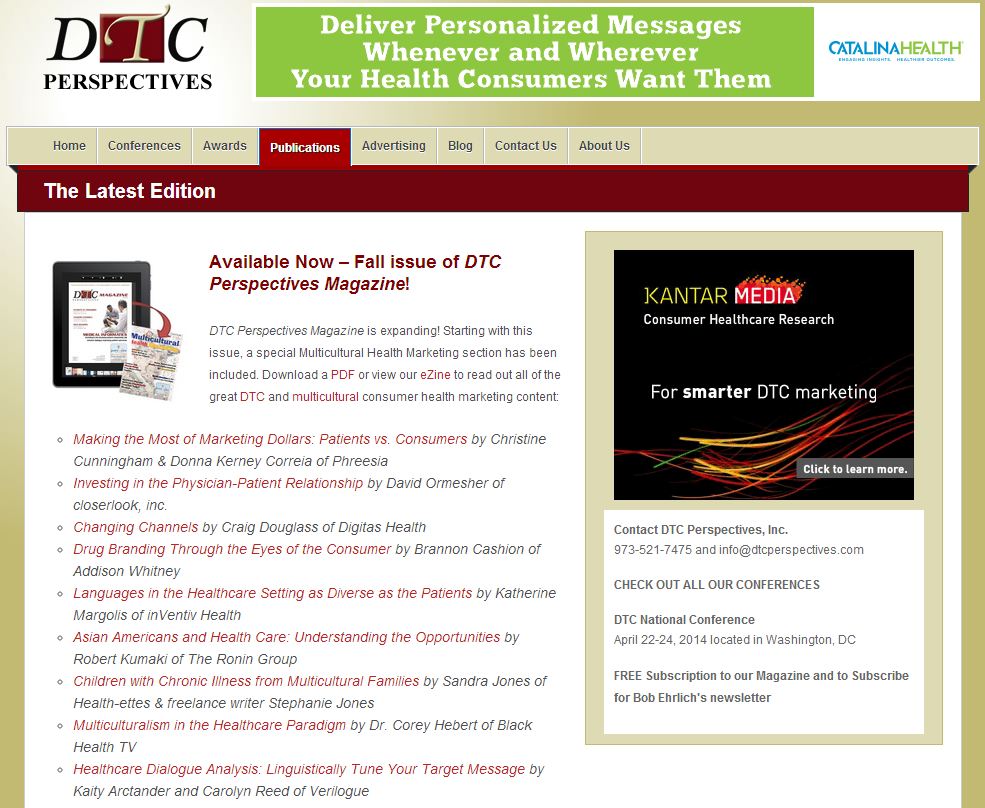Risk vs. Reward in Pharmaceutical Brand Naming
Today we are excited to have a guest blog from Joshira Maduro, Verbal Branding Associate at Addison Whitney!
Getting a drug from the lab to the market is an incredibly time consuming and resource consuming task. There are several rounds of clinical trials the drug needs to pass, which only occurs after pre-clinical research. Then there is the approval process, where the regulatory agencies not only check all the related data about the drug to ensure its efficacy and safety for approval, but also review the proposed brand name to ensure it is sufficiently unique from names of drugs already on the market.
In the pharma world there are two factors that regulatory agencies consider “risky”: if looks or sounds too much like a drug already on the market and if the name gives too much of a claim or over-promise.

For instance, a name with the word “cure” in it, or a name that shares its first five letters with another drug already in the market would have a difficult time gaining approval. Companies avoid these risks by going through a rigorous screening process before submitting their final name candidates. The screening and approval process can easily take months, if not a full year, so it’s important to make sure the naming process provides more than enough “safe” options to keep up with launch timelines.
However, sometimes it pays off to take a riskier route, going outside the norm and developing a name that would stand out in a saturated marketplace. These names, if approved, have a high opportunity for easy name recognition, which greatly benefits future marketing efforts.
Generally speaking, brand names fall into three strategic categories – Blank Canvas, Scientific/Functional and Aspirational. They are each defined by the rationale behind the brand name and how it ties back to the product and the overall brand strategy. Additionally, they each carry “safe” and “risky” name characteristics, which must be balanced when creating a name that fits into the category. Here are three main types of brand names, and where they fall in the “safe name” spectrum:
- Blank Canvas: These names tend to have no inherent meaning but aim to sound nice and look intuitive to say. The biggest risk these names face are the lookalike/soundalike comparisons to competitor drugs. In my opinion, these would be the “safest” option in naming.
- Scientific or Functional: A name that leverages letter strings from its generic name or Mechanism of Action would fall into this category. These names can face more risk than blank canvas because there will likely be another competitor already leveraging similar concepts in their name. There is also a danger of having a name that shares too many letters with its generic.
- Aspirational: These are the names that truly look to tell an emotional story. Telling an emotionally impactful story can make the name stand out more to patients, especially if it is a drug in a very crowded space. However, since these types of names have the risk of looking/sounding like a competitor and being a claim, the fall on the riskiest end of the spectrum.
So which of these types of names is the best for your drug? Well, there is no clear-cut answer. Each of these kinds of names has their risk, so there is no truly “safe” option. However, it would take more effort to get a more aspirational name to pass screens and gain FDA approval compared to a blank canvas name. On the flipside, an aspirational name can yield more differentiation in a saturated market compared to a scientific/functional name so that it could be worth the effort.
In the end, where you brand name falls in the spectrum is a case-by-case decision, which is a statement that isn’t as obvious as it sounds. Yes, of course each name development process is different, but often we fall into the trap of looking around and allowing trends or patterns to weigh more heavily on the decisions than they should. Deciding what factors are most important in the long run and sticking to those decisions can give your drug name the best chance of success, both in the approval process and on the market.
Addison Whitney Health's Vince Budd Featured in PM360 Magazine
Addison Whitney Health Senior Vice President Vince Budd is featured in the latest issue of PM360 Magazine, with another edition of the "Brand Slam" series.
This month's "Brand Slam" article is titled "Get to Know More About Brand Naming." It focuses on the importance of partnering with branding and naming agencies who have an in-depth and extensive knowledge of the latest in branding regulations and trends.
A brief passage from the article is below, and if you'd like to read the entire post, you can find it here.
Get to Know More About Brand Naming
In the pharmaceutical branding world, the only constant is change when it comes to regulation among the global health authorities. Governing bodies from the FDA to Health Canada to EMA are in a continuous adaptation to evolve the process of gaining approval of a drug. These include many factors related to an asset’s development, up to and including the brand naming. And in this situation, knowing what is ahead of you is half the battle.
For instance, Health Canada recently released a new set of regulatory naming requirements for all drugs to be marketed in Canada. This is a big step in a new direction for the agency, and with this new direction comes new challenges for manufacturers developing products.
Therefore, it makes sense for pharmaceutical organizations to look to partner with those who have their finger on the pulse of these directional changes, and who have the processes in place to navigate the rough waters of change.
Addison Whitney is a global branding firm with a passion for building strong brands.
To learn more about Addison Whitney, visit our website at AddisonWhitney.com, or contact us here.
Real-Time Marketing: Making It Work For Pharma Branders
Real-Time Marketing: Making It Work For Pharma Branders
Let’s start by creating a baseline for this topic. What is real-time marketing (RTM)? Of all the attempts to define this marketing strategy, a blog post from Evergage sums it up quite nicely: RTM is “…the practice of brands engaging their audience via content, advertising, and product placement that is relevant to a specific current event or cultural happening. The content is most often in the form of a “meme” or graphic advertisement shared through social media channels.”
An easy example? Oreo’s infamous tweet during last year’s Super Bowl.
When we start to look at RTM (sometimes referred to as viral marketing) through a healthcare lens, we need to dig a bit deeper. Pharmaceutical branding is inherently complicated. The industry is overflowing with rules, regulations and guidance – all of which make marketing a bit challenging. And because of these parameters, real-time marketing, as explained by Evergage, seems somewhat elusive.
But, it really is all about perspective. Mashable frames it up a bit differently.
“…real-time marketing success starts with a brand's day-to-day activity, not a single well-timed moment. Don't swing for the fences your very first time out. Implement small, real-time marketing initiatives on a regular basis; patiently teach your audience they can expect timely, relevant communications from your brand. Then, when a really big opportunity arises, your team is poised and ready to make the most of it.”
When considering in Mashable’s frame of reference, RTM and pharmaceutical branding seem to better coexist. This tactic becomes less about a cute response and more about being responsive – and proactively so. Pharmaceutical companies face an unfathomable number of questions from a variety of audiences – and comprehensive, strategic marketing efforts can go a long way to answering a lot of them before they’re even asked.
Pharma branders can utilize RTM by identifying opportunities that work within the confines of their industry – and by viewing those parameters as guideposts, rather than obstacles. A program like TEDMED is a great example of such an opportunity TEDMED brings together like-minded industry professionals and gives them a variety of platforms to promote their brands. Brands can use all of the tools of RTM to tell their story while they attend (or even just live stream) this kind of conference.
And, in order to succeed at RTM, you have to get comfortable with learning as you go along. The fundamental tactics of this type of strategy are content, social channels, mobile and video. Can’t focus on all four areas? Then specialize in one and grow from them. But, the key to real-time marketing is responsiveness – build a program around that and you’re more than on your way to a successful campaign.
# # #
Sources
“Real-Time Marketing Isn’t What You Think It Is,” Evergage.
“Someone Give This Oreo Employee A Raise,” Mashable, Feb. 3, 2013.
“4 Steps to Explosive Real-Time Marketing,” Mashable, July 15, 2013.
“Real-Time Marketing Opportunities in Healthcare?,” brandgagement, May 7, 2013.
“2014: The Year of Digital Pharma?,” Pharmaceutical Executive, Jan. 23, 2014.
Hot off the Press: Addison Whitney Feature in DTC Perspectives Magazine
Our global president, Brannon Cashion, wrote an article about pharma branding through the eyes of the consumer for DTC Perspectives Magazine’s Fall 2013 issue. Check it out: https://goo.gl/bsoh8g!
Branding Pharmaceutical Drugs in China
Did you know according to the Chinese Association for Pharmaceutical Equipment group that the Chinese pharmaceutical industry has been growing at an average annual rate of 16.72% over the last few decades?
And that growth isn’t going to slow down anytime soon.
China stands at the cusp of a modern society with an increasingly affluent and growing population. And it’s this growing population that is demanding better services and quality of life – but how will this impact the pharmaceutical industry in China – particularly in regards to branded pharmaceutical drugs?
Not just in the pharmaceutical industry, but for all industries across the board, China has become the must win market. An aging population, increasingly affluent younger population, and the rise of diseases in China all create an emerging need for drugs, which is why The IMS Institute has predicted that by 2016 China will overtake Japan as the second largest pharmaceutical market in the world. So it’s no wonder why billions of dollars a year are being invested in the country.
Many foreign players such as AstraZeneca, Pfizer, Bayer and GSKhave already established themselves firmly in the market and are expanding their services regularly within the country. But with the entry of foreign players in the industry, the competition amongst these players will continue to increase. China has more than 5,000 pharma companies, and in 2010 was the leading country filing pharmaceutical trademarks – even beating out the United States, one of the most mature pharmaceutical markets by nearly 10,000 trademarks filed. Even though China is the global leader filing pharmaceutical trademarks, the majority of the drugs manufactured in China are generic. But as China’s consumer mindset continues to mature and grow, so will the branded pharmaceutical sector.
Why the continued growth?
Specifically for pharmaceuticals, powerful product brand names are important tools to offset competitive pressure from generics and to build customer loyalty. Though heavily regulated by state legislations, in China’s case the SFDA, brand naming for pharmaceutical products is unique, and can greatly affect marketing decisions.
In highly competitive environments, a strong brand will rise above the clutter and demand attention. With a strong brand, you secure a unique position of credibility in the consumer mind, have more influence on your market and motivate customers to purchase from you.
From a marketing perspective, brand naming for a pharmaceutical product may take into consideration aspects such as the chemical/biological nature of its active ingredient, composition/formulation, therapeutic indication, associated medical condition, benefit and adherence to the corporate identity.
From a communication point of view, pharmaceutical branding specialists must decide whether to focus on the functionality or the end-user benefits. It is also from the same angle that pharmaceutical naming is usually considered of great complexity, as most of the time, both audiences should be targeted.
Chinese regulations on pharmaceutical drug naming frown upon utilization of characters that are either indicative of curative effect, intended use, target audience or may imply efficacy.
Regardless of the market you’re in, developing a strong pharmaceutical name is tough, but in China it can be particularly challenging. You must keep in mind translations, the use of characters and regulatory conditions. Biological and pharmaceutical products rely heavily on the protection of intellectual property rights, so it’s essential for foreign companies to gain thorough understanding of China’s IPR protection system before entering the market.
Multinational companies have greatly expanded their businesses in China over the years and have aligned with local pharmaceutical companies, which has proven to be a winning strategy for both parties. And as these companies and other foreign players continue to expand their footprint in China, competition will become fierce as each seeks to penetrate the market. Pricing, intricate knowledge of regional markets and developing strong brands will determine who gets ahead and who doesn’t.
For Your Best Night Ever, The Secret is Clear
If you are anything like me, you love the scoop on the latest and greatest hair and beauty products. Or maybe you enjoy relaxing by catching your favorite show on T.V. or browsing the internet. Either way regardless of your interests or media consumption preference, you have probably heard or seen some type of advertising for the new premium hair care brand Clear Scalp & Hair Therapy. Recently launched by Unilever, Clear Scalp & Hair Therapy is already sold in 42 different countries and has just recently made its way to the United States market, and already it’s making a splash.
One of the first things that came to my mind upon discovering this new line was wondering how exactly a new brand of shampoo and conditioners distinguishes itself from their abundance of competition. If you’ve been down the hair care isle at your local store lately, you know that it can be overwhelming with the large variety of options there are to choose from. To combat this issue Unilever is taking a new (and extremely interactive) approach to promote their brand and get the consumer’s attention. In their promotion for Clear, NBCUniversal’s Integrated Media along with Creative Partnerships & Innovations Group and Mindshare Entertainment have created one of the largest social television advertising campaigns to date. “In today’s crowded marketplace, it is more important than ever to rise above the clutter with breakthrough creative that engages audiences in new and unexpected ways” says John Shea, Vice President and Chief Marketing Officer of integrated media at NBCUniversal.

Advertising for Clear Scalp & Hair Therapy is focused around a multi-part mini-series that will air across several different TV networks including NBC, Bravo, E!, Oxygen, and Style as well as their online websites. Named “The Best Night Ever,” viewers follow two club-goers on their quest to gain access to the VIP room and have, well, their best night ever! Jane Krakowski, Giuliana Rancic, Andy Cohen and Tim Meadows are among the characters within the commercials. “Ultimately as our characters and celebrities prove, the secret to having your best night ever is not befriending the bouncer or getting to know the bartender, it’s about the confidence that great hair brings” says David Rubin, U.S. haircare marketing director for Unilever.
Viewers can tune in to watch segments of the series air during different programs on different networks and are then directed to go online to Clear’s Twitter or Facebook pages. Once there, viewers can gain access to an online video platform that allows viewers to make choices that affect the course of the series in real time. While viewers are there they can check out the latest information on the product and leave their comments and questions as well. “This is audience engagement at its best. By infusing entertainment into the Clear Scalp & Hair Therapy message, the campaign becomes a fun, shareable, impactful experience,” notes Barbara Biangiardi, Senior Vice President of Creative Partnerships and Innovation.
Marketing your brand this way allows access to direct consumer communication and allows your company to be more attuned to the ever changing trends in the market. Only time will tell how successful Clear Scalp & Hair Therapy will be in the United States, as the last part of the mini-series is set to air June 11th. With such an innovative marketing strategy where viewers are engaged with multiple screens yet exposed to only one product, it would be hard to imagine anything other than success for Unilever. As their campaign suggests, you can accomplish anything as long as your hair looks great!
Contributed by: Nicole Juliano
Why INN's are so Important to a Drug's Life
Every pharmaceutical asset begins with a nonproprietary, generic name, or an International Nonproprietary Name (INN). This name could potentially be the first strategic decision you make for the commercial life of your brand.
But what exactly is an INN name and why do they exist?
Since the inception of the INN naming system in 1950 it has been providing health professionals with a way to uniquely and universally identify each pharmaceutical substance. INN's are not only important in identifying a drug's pharmaceutical ingredients but in providing safe prescription and dispensing of medicines to patients, and communication between health professionals worldwide. The World Health Organization (who manages & issues INN's) issues INN's in English, Latin, French, Russian, and Spanish, and more recently Arabic and Chinese versions are also being issued.
Here Vince Budd, Senior Vice President at Addison Whitney, speaks of the importance INN's have on the success and lifecycle of a drug:
"Although INN’s aren’t actually considered intellectual property, developing an INN is without a doubt a strategic endeavor that many commercial, medical and regulatory officers take very seriously. First, the commercial team of an organization sees this as the first opportunity to put some sort of face or image to the asset. Although WHO would like manufactures to use trivial or fantasy letter strings when building generic names around INN stems, many approved INN’s are actually quite suggestive about the product. This helps some of the branding activities that soon follow. Also, many manufacturers must think about the life cycle of the asset and potential generic competition, which also impacts the type of INN name that is sought. The bottom line is INN development is serious business and the wrong or right name can certainly have an impact on the future success of a drug. "
According to WHO there are roughly 8,000 INN's listed today, and that number grows by approximately 120-150 each year. Every INN must be submitted to and approved by WHO, and must follow their general principles for developing INN's.
Source: World Health Organization
Tobacco Gets Graphic

If you plan to purchase cigarette packs after September 2012 you may be surprised, or even disturbed by what you see. The Food and Drug Administration is requiring graphic warning labels with images ranging from a man exhaling smoke through a tracheotomy hole in his neck to a diseased lung to be placed prominently on cigarette packs. Cigarette marketers also will be required to place 1-800-QUIT-NOW numbers on new packaging.
The vivid images are the biggest change to cigarette warning labels since the mid 1980s, when the government began requiring tobacco companies to put health warnings on cigarette packs and tobacco ads. Targeting the cigarette packages themselves shows that the FDA understands the importance of compelling package design. Consumers are influenced by the entire experience of a product. The design of the outside of a package is just as important as what’s inside. A package is more than just a container; it is an asset that can motivate a purchase. Having an effective package design in a crowded marketplace is essential to making a product stand out.
So where does a tobacco company go from here? How does one market a product with packaging designed to shock consumers and discourage them from using the product? “The cigarette companies are in an environment where their product is seen as dangerous,” Brannon Cashion, president of Addison Whitney, told USA TODAY. He points out that tobacco marketers have done a good job dealing with growing anti-smoking efforts. What they need to do is stress innovation, such as developing low nicotine and electronic cigarettes.
“In order to continue to manufacture the product, they have to continue to put innovations in place that can do everything possible to make as safe an environment as possible for those who smoke and the people most affected with their smoking.”
For more information on the new FDA cigarette health warnings, click here.
Happy Birthday BOTOX!


While the results are temporary, I have a feeling BOTOX® is here to stay.
Did you know BOTOX is the most popular non-surgical beauty treatment in the world? It is also one of the world's most versatile and most widely researched medicines in the world.
Botulinum toxin, a purified protein derived from the bacterium Clostridium botulinum has been researched for over 100 years. Since it was identified in 1895, researchers have been intrigued by its potential therapeutic uses.
In 1987, Jean Carruthers discovered that injections of botulinum type A could erase lines and wrinkles. Botox was first approved on March 14th, 1990 for the treatment of misaligned eyes, uncontrollable blinking and nerve disorder. Soon to follow would be approvals to reduce the symptoms of muscle contractions in the neck and foot deformity. Most recently, in July 2004, BOTOX was granted approval in the United States to treat the symptoms of severe underarm sweating. A similar product is BOTOX Cosmetic®, which is approved for the treatment of frown lines between the eyebrows, forehead wrinkles and crow's feet.
Today, BOTOX is one of the most popular physician-administered aesthetic prescription procedures and researchers are exploring many medical uses for BOTOX. It is currently seeking approval from the FDA for migraine headaches.
Why is the product so popular? Many believe this is because of its ability to achieve predictable and measurable results through a relatively simple treatment that requires no surgery.
Happy Birthday, BOTOX! Make a wish!
Contributed by: Ashley Popham
Hospital Branding
Have you ever asked yourself how hospitals in your city seem to be everywhere these days? Here in Charlotte some have commented on how Carolinas Medical Center went from one hospital in the center of the city to a network of centers all across town. There is even a CMC branded facility in a newly built YMCA down by our office. In the last few months hospital administrators have tapped our brand consultancy to provide insights on strategic branding plans.
According to a recent article, there are four ways most hospitals across the country are achieving brand recognition. The first is through specialization. In this scenario focus is placed on building a practice around a very specific niche and all the communications reinforces that area of expertise. If an ailment comes up having to do with that specialty, a properly executed brand message would reinforce how specialization is synonymous with being the best in treating the condition. The Cancer Treatment Centers of America comes to mind in such a scenario.
We have also observed organizations, such as HealthSouth and Kindred, utilizing their master brands across multiple locations. No matter where you go, the same brand seems to remind you who the dominant healthcare player is in the area. Repetition of a brand identity is known to establish high levels of brand recognition under unaided market research. A new building brings with it a new place to expose the name.
Similar to the previous strategy, some medical groups have decided to build a brand in multiple directions. In this method multiple practices across numerous specialty areas are acquired and during the brand transition the previous brand goes away while master brand takes priority. The thought process here is to have your target audience think of you first when they get sick regardless of medical condition.
A fourth option can be illustrated by examining The Mayo Clinic and Cleveland Clinic. The two have extended their brand well beyond the physical territory they serve with the establishment of a technology partnership. Mayo has a venture with Microsoft and Cleveland with Google. In this type of collaboration all parties benefit by providing target audiences with an online tool featuring healthcare resources in what is perceived as trusted brand names.
If we think ahead don't be surprised to hear about future branded partnerships when it comes to the new online personal health records being proposed.
Contributed by Ninh Nguyen




